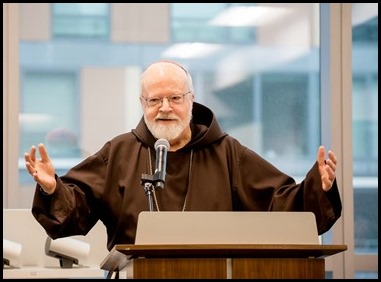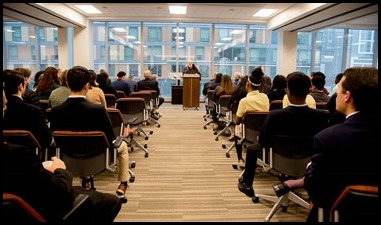Hello and welcome!
Last Friday, I was very happy to attend the Catholic Schools Foundation’s Celebration of Excellence Breakfast for Inner-city Scholarship Fund recipients who are going to graduate from high school this year. 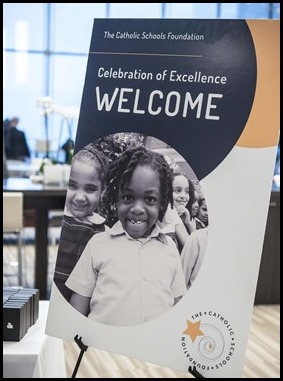
It was an opportunity to recognize the seniors for all their hard work and accomplishments over the last four years.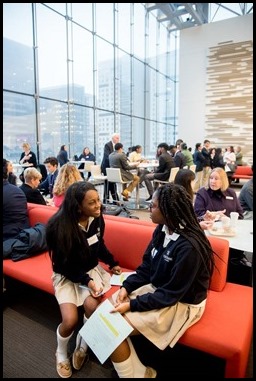
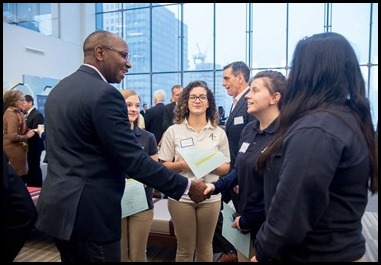
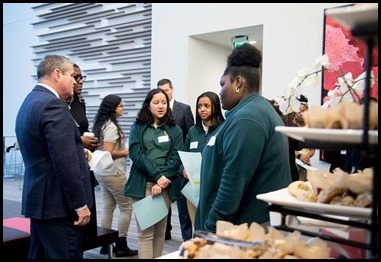
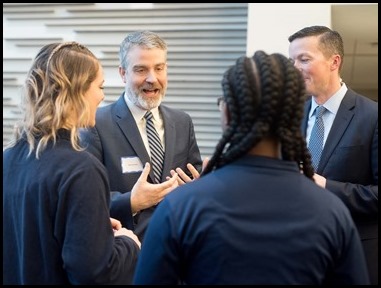
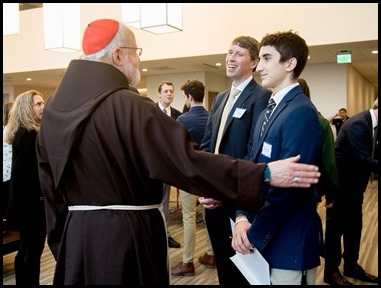
The event was hosted by John Farina of PwC at their offices in the Seaport District. It was a very lovely venue for the reception, and the view of Boston was just spectacular.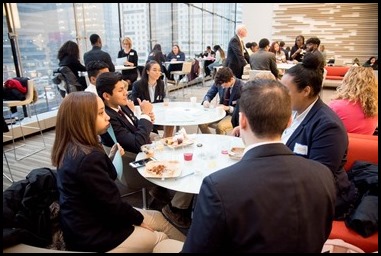
John addressed the young people during the breakfast, as did the director of the Catholic Schools Foundation, Michael Reardon.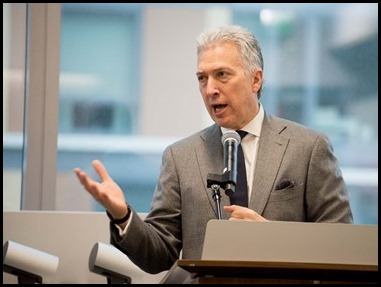 John Farina
John Farina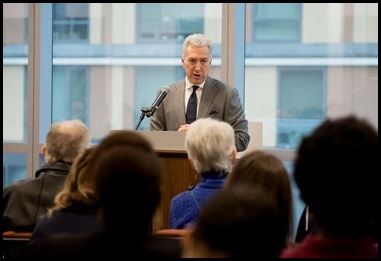
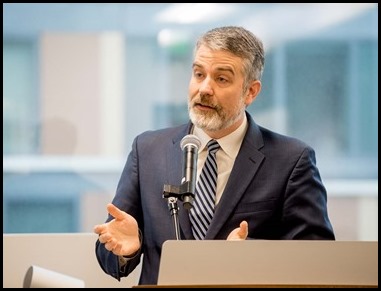 Mike Reardon
Mike Reardon
For me, the most powerful witness of the day came from the student speaker, Taban Manyok from St. Mary’s High School in Lynn. He is a refugee from Sudan and told the story of how he has been able to achieve success in both academics and athletics thanks to the Catholic education he received through the help of the Inner-city Scholarship Fund.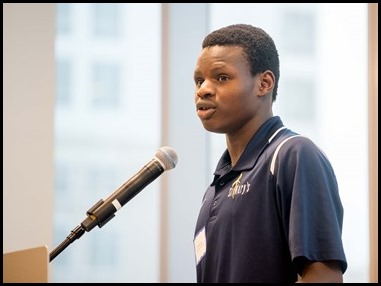
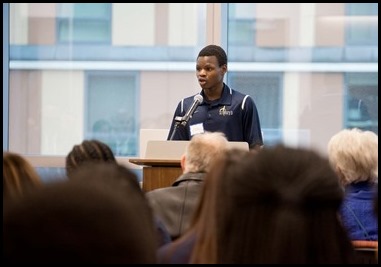
ICSF scholarship recipients have a 100 percent high school graduation rate and a 98 percent college acceptance rate. As I always like to say, there is no other institution in the United States that has been more successful in moving people out of poverty and into the middle class than our Catholic schools. We are so proud of these high school seniors for all they have accomplished, and grateful to the Catholic Schools Foundation for having helped give them that opportunity. 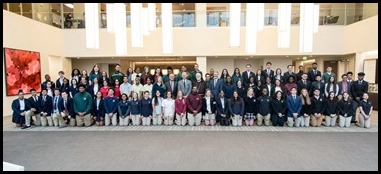
That evening, I went to Regina Cleri to visit a number of our men who are convalescing there. 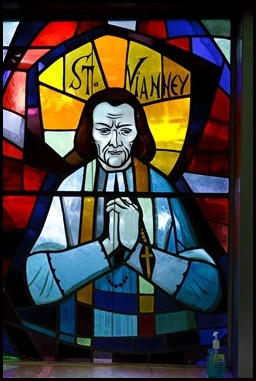
It was very encouraging to see the many improvements that are taking place at Regina Cleri, and it is always a great joy to see the wonderful spirit that reigns among the men who live there.
Saturday, I went to Immaculate Conception Parish in Revere to celebrate the 4 p.m. Mass with the parish community.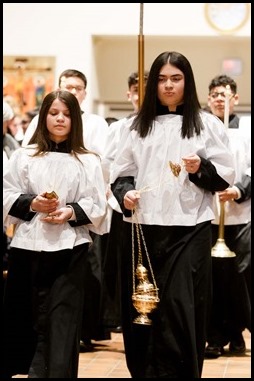
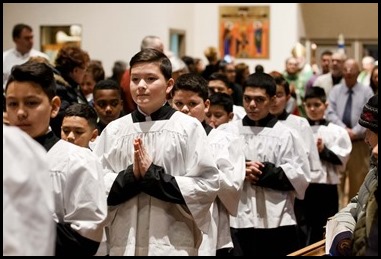
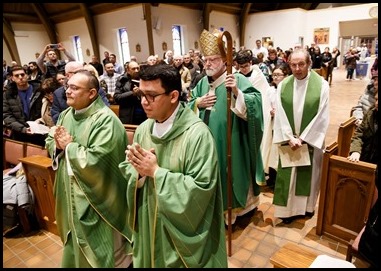
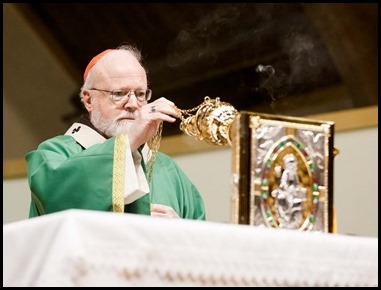
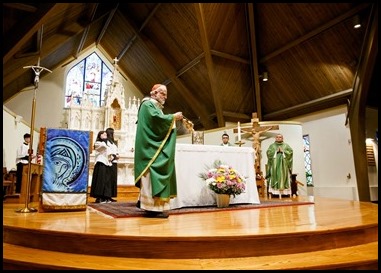
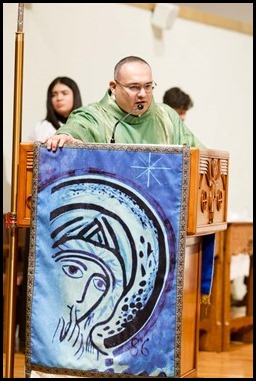
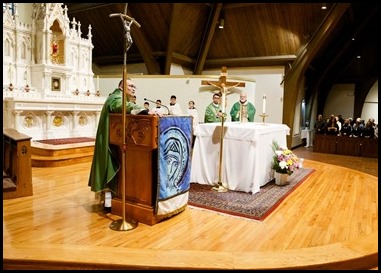
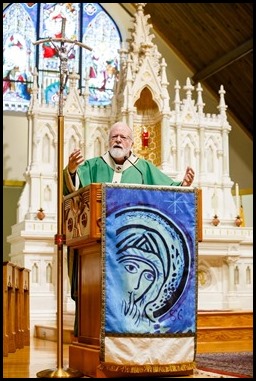
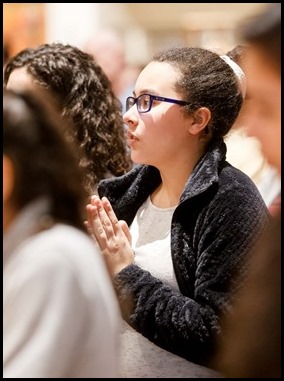
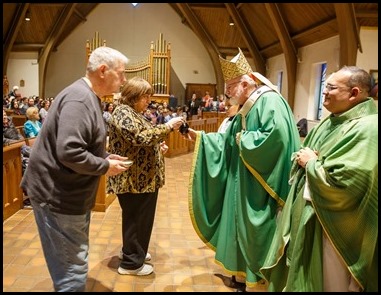
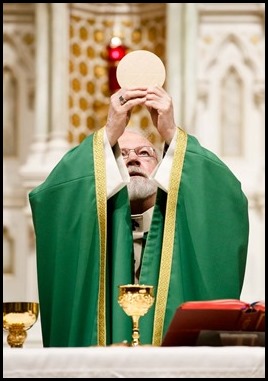
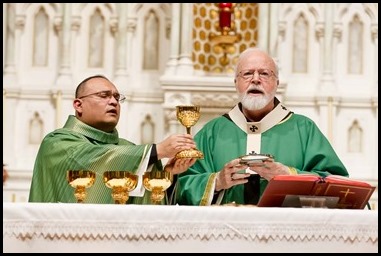
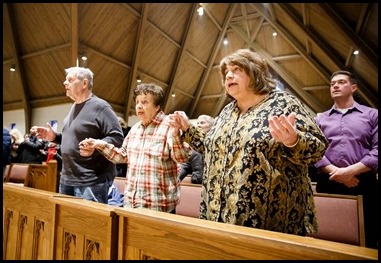 The Mass was very well attended. It was standing room only.
The Mass was very well attended. It was standing room only.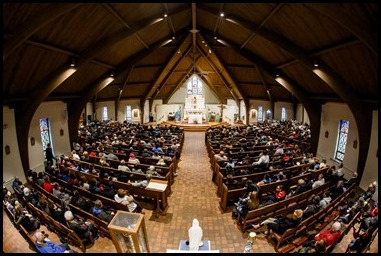
They had a wonderful choir, and a children’s choir from Immaculate Conception School performed for us, as well.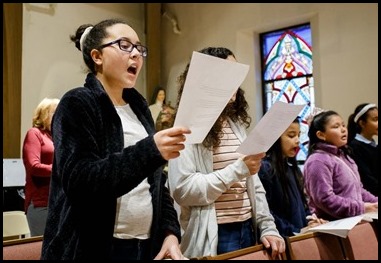
After the Mass, there was a reception across the street in the school gymnasium. 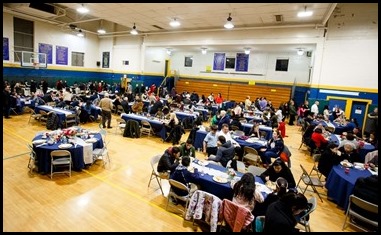
There, I was able to greet many of the parishioners and families from the school.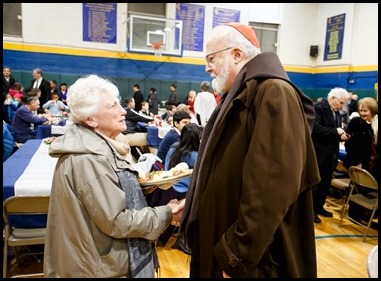
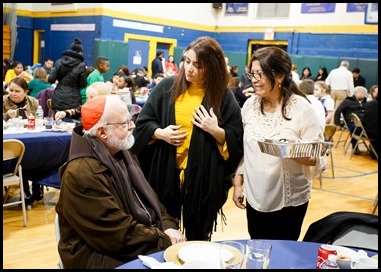
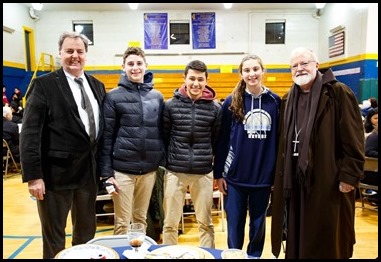
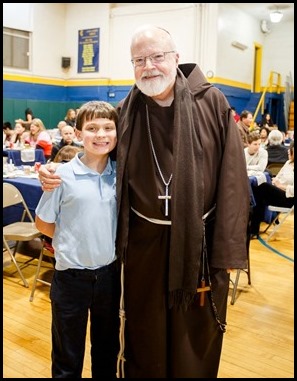
During the reception, there was a play put on by the Hispanic youth group of the parish. It was done in a sort of pantomime fashion — the actors did not speak but were accompanied by singers. It was a very nice production.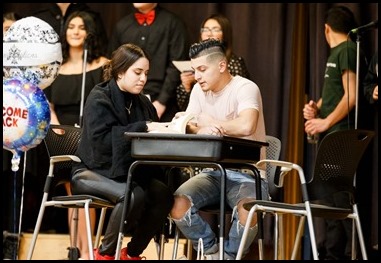
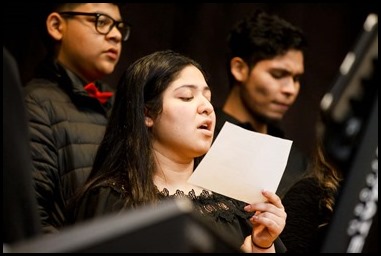
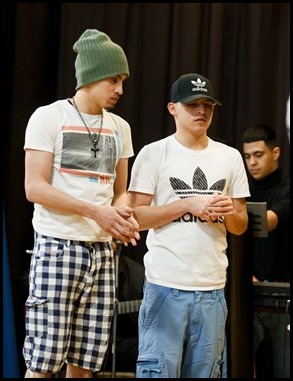
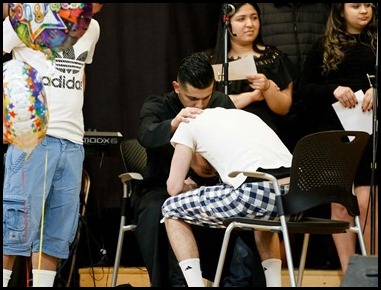
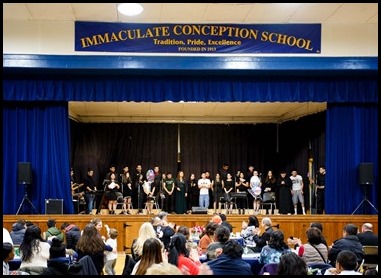
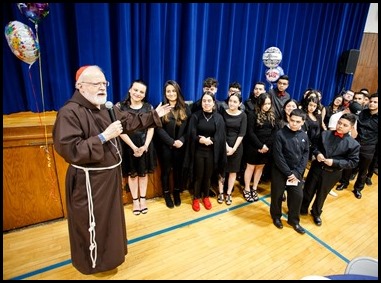 There was great enthusiasm in the parish, and we are so grateful to the administrator at Immaculate Conception, Father Daniel Lazo, and the vicar, Father Eric Velazquez, who are both doing such a fine job there.
There was great enthusiasm in the parish, and we are so grateful to the administrator at Immaculate Conception, Father Daniel Lazo, and the vicar, Father Eric Velazquez, who are both doing such a fine job there.
Sunday, I was very happy to celebrate the installation of our new rector of St. John’s Seminary, Father Stephen Salocks.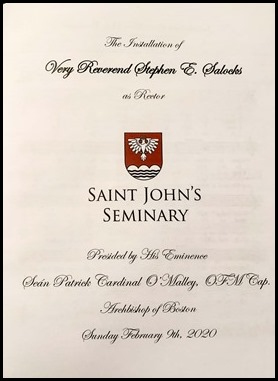
We were so pleased that nearly all the bishops of the sending dioceses were able to be with us for the celebration.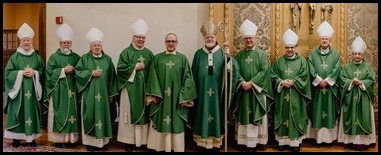
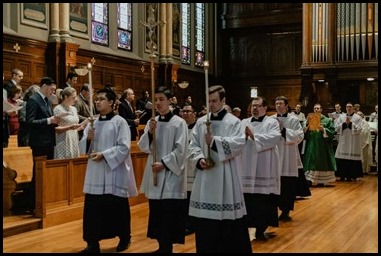
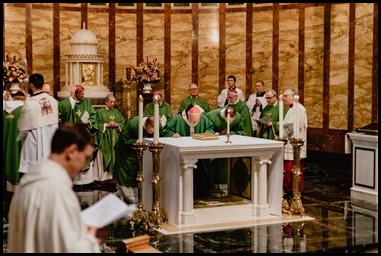
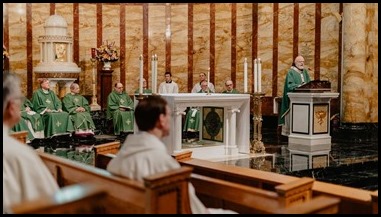
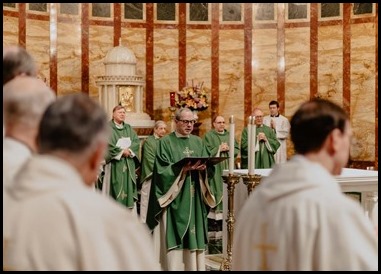
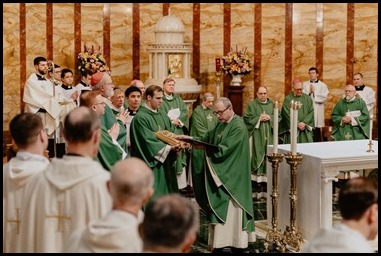
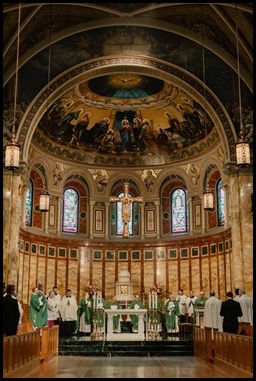 Of course, the seminary choir did a wonderful job as always.
Of course, the seminary choir did a wonderful job as always.
After the installation, there was a luncheon in the seminary refectory for the seminarians and their guests. We were also joined by many friends and benefactors of the seminary as well as the Board of Trustees.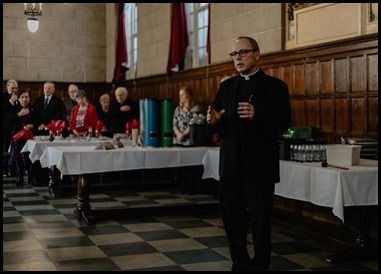
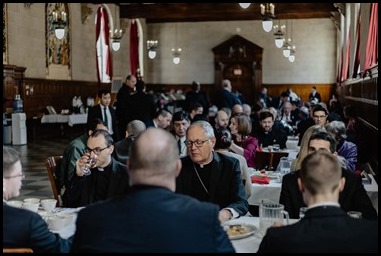
I would like to share my homily from the celebration with you here:
Being on a mountaintop or a lampstand is a precarious position. I always say that being the Archbishop of Boston is like living in a fishbowl made of a magnifying glass. But the life of a priest is also under scrutiny by all; those who are looking for his faults to criticize, as well as those who are looking to find inspiration in a priest’s life of sacrifice and service.
Today, Jesus, in the Sermon on the Mount, gives us the job description for his disciples, the job description which is intensified when the disciple in question is a priest. Jesus says you are the salt of the earth and the light of the world. You are meant to be on the lampstand and the mountaintop so that the witness of your life can be like a lighthouse helping people through treacherous waters to find safe harbor in Christ’s body, his Church.
In our modern world, salt has lost a lot of its importance. Recently, my doctor asked me if I used salt, to which I replied, “Only on red meat.”
He said, “Wrong answer.”
In Rome, there was an ancient road called Via Salaria. It was the salt road and extended from Rome to the Adriatic coast. France and Germany also had their salt roads, and Ethiopia had a route for their camel caravans that carried salt to different parts of their country. Roman soldiers, as part of their wages, received a salt allowance — hence the word “salary.”
When Jesus talks about being the salt of the earth, the people in his audience realized the import of the expression. They did not think in terms of the saltshaker filled with sodium chloride. They thought of a precious commodity that was used to improve the quality of human life, to preserve their food, as well as to enhance its taste. Salt changes what it touches and keeps things from spoiling, rotting and corrupting. Without salt, fish and meat could be very dangerous foods in a world without refrigeration.
The seminary has a task to form leaders for our Church who will be salt of the earth, who will be capable of changing the hearts of the people entrusted to their care, help to preserve them from the corruption of sin and worldliness, and help them to experience and savor the joy of being part of Jesus’ family the Church.
Just as it is impossible to exaggerate the importance of salt in the history of humanity, likewise the testimony of a life of discipleship changes the course of history, enhances civilization and contributes so much to the advance of humanity, helping people to find meaning in their life, purpose for their existence, and the mission to transform the world and make God’s kingdom more present and more visible.
The metaphor of light is easier for us to appreciate. Last Sunday, the Feast of Candlemas, had as its theme Christ the light of the nations. Once again, our task is to carry that light into the surrounding darkness so that people can glimpse the beauty and love of God.
Despite our limitations and our weaknesses, Christ is calling us to be light of the world. When I was a subdeacon, I worked in a coffee growing town in the mountains of Puerto Rico, where parts of the parish were accessible only on horseback. During that time, I went to visit our Friars in Santo Domingo and stayed at the parish, Paz Y Bien. We had electricity for an hour a day — from 11 o’clock in the morning until noon. Just when you needed it!
A few years later, I returned and was happy to see that virtually the whole city had illumination at night. However, the President, Joaquin Balaguer, had built a huge monument to house the body of Christopher Columbus. The monument is actually a very large lighthouse (the Faro De Colon). When it was illumined, a powerful laser projected a huge cross in the sky, a cross that can be seen from many miles away. However, whenever they turned the lighthouse on, the rest of the city would be plunged into darkness.
The moral is that to be light of the world, we need powerful batteries, interior resources. The seminary is a time for us to cultivate an interior life, friendship with Christ, the fraternity that will result in an intentional presbyterate, and a deep pastoral love for the people we are called to serve.
Without powerful batteries, we can be plunged into the darkness of extreme individualism, deep skepticism in the worldliness that will rob us of our capacity to be salt and light.
Seminary life is an invitation to an ongoing conversion that requires us to die to self so that Christ can live in us. Living the priestly life day-in and day-out, remaining faithful to one’s commitment, and staying firmly on the path to a true priestly holiness, is no small challenge. It is important to have a clear understanding of the nature of the commitment that we are making, a clear picture of the path that we must walk, and a firm resolve to live it. The living of a priestly life requires the development of virtues.
In addition to the moral virtues which strengthen us to make good decisions, I would like to hold up in a special way a few priestly virtues needed in the salt and light department. The virtue of gratitude; that firm realization that everything we have and everything we are is a gift. The virtue of Pastoral charity, which prepares us to wash the feet of others, putting the needs of others ahead of our own, the way a good father does for his children. The virtue of humility; it is the attribute that gives spiritual value to every good deed. Without humility, the greatest service, accomplishments and deeds are worthless in God’s sight. Our good deeds are not for self-aggrandizement, but Ad Maiorem Dei Gloriam. Humility finds expression in simplicity of lifestyle and of freedom from the enslavement of fashion and the dictates of our materialistic culture. The virtue of joy is also crucial for a priest. Pope Francis talks about evangelizing through the Via Pulchritudinis. But what can be more beautiful than the joyful heart of a priest who is in love with Christ, with his vocation and with the people he is called to serve? More than eloquence, intellectual prowess and administrative abilities, joy is a magnet that can draw people into the mystery of Christ’s love.
The first reading from the great prophet Isaiah documents his exhortations for his fellow Israelites who have just returned from the Babylonian captivity and are striving to rebuild Jerusalem and their way of life: “Thus says the Lord, share your bread with the hungry, shelter the oppressed and the homeless, clothe the naked, do not turn your back on your own. Then your light will shine forth like the dawn, and your wound shall quickly be healed.”
The prophet reminds us that to be the light of the world and to heal ourselves we must be instruments of God’s love and mercy, especially to those who are poor, who are sick, who are suffering, who are homeless, who are immigrants, who are prisoners. The priest must be a father, but especially to those who are poor and suffering. I am always so struck by Cardinal Martinez’s analysis of Jesus’s priorities, which places care for the sick and works of mercy as the number one priority in the Gospels. Mercy is the context for the Proclamation of the Kingdom.
To be men of salt and light, we must be men who bring healing and reconciliation into our broken and divided world and church. We live immersed in a society that is ever more polarized and toxic. Salt and light means bringing healing and reconciliation, promoting community and unity.
It is our ardent hope that The Eucharistic Year will help all of us to grow in our love for the Eucharistic Lord, who feeds and nourishes us so that we can truly be salt and light.
In this Eucharist, we have the joy and privilege of formally installing the new Rector of St. John’s Seminary, Father Stephen Salocks. I am deeply indebted to him for all that he has done at the seminary during decades, but especially now for providing such priestly leadership during this difficult period in the history of St. John’s. I am grateful to all of you for your patience and forbearance, but especially to Father Steve for leading the seminary community with such grace under pressure. I am happy that so many board members and friends of the seminary are able to join us today. I know that many of our priests would want to be here, were it not for their Sunday Mass obligations in their parishes. They, too, are delighted with Father Steve’s appointment.
I am grateful also to all our generous faculty members and in a special way to Father Tom Macdonald who has so generously accepted new responsibilities as a Vice Rector. Seminary formation is one of the most important ministries of the archdiocese. I have great confidence in the faculty and staff of the seminary. I know that St. John’s will continue to be one of the premier seminaries in our country, dedicated to forming good and holy priests after the heart of the Good Shepherd.
Tuesday, I went to St. Theresa’s in Methuen to celebrate the funeral Mass of Bishop William McNaughton, MM. Bishop McNaughton was a bishop for 59 years and was one of the last bishops who attended all four sessions of the Second Vatican Council.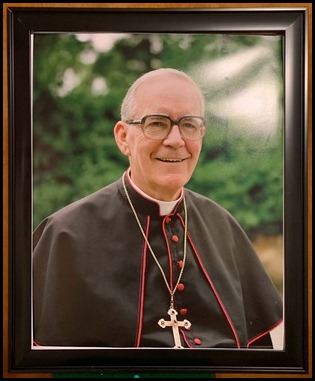
He was from Lawrence and entered the Maryknoll seminary after he graduated from Central Catholic High. After he was ordained to the priesthood, he was sent to Yale to study Korean, to prepare him to serve in the missions there. He arrived in Korea in 1954, the year after the war ended. It was a very difficult time in Korea, but he was a very beloved spiritual father to the people he served there. He was ordained a bishop by Cardinal Cushing in 1961, when he was just 35 years old, and went back to Korea to become the first Bishop of Incheon. He was there until his retirement in 2002.
For a time, he lived at the Maryknoll community in New York but, in his later years, he came back to Massachusetts to live with his sister, Ruth, in Methuen. In his retirement, he was very generous in helping out with the Korean community in the archdiocese, saying Mass for the Poor Clare Sisters in Andover, and celebrating confirmations at many of our parishes.
Among the many friends and loved ones of Bishop McNaughton who were with us at his funeral was Bishop John Barres from the Diocese of Rockville Centre, whose family was very close to Bishop McNaughton. Bishop McNaughton met Bishop Barres’ parents at Yale. They had been Protestant ministers, and Bishop McNaughton was instrumental in their conversion to Catholicism. Bishop Barres has remained very close to the McNaughton family, especially his sister, Ruth.
Father Martin Hyatt from St. Basil’s Salvatorian Center in Methuen was the homilist for the Mass, and there were two reflections on Bishop McNaughton’s life offered following the Mass. One was from Father Peter, the vicar general of the Diocese of Incheon, representing Bishop John Baptist. There were also quite a number of Korean priests and faithful with us for the Mass, many from our own Korean parish of St. Antoine Daveluy, who were accompanied by their pastor, Father Dominic Jung.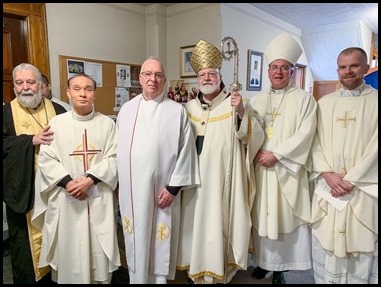
It was a wonderful celebration and a fitting tribute to a man who did so much for the Church, particularly the Church in Korea.
That evening, we had one of our regular St. Andrew Dinners at St. John’s Seminary for young men considering a vocation to the priesthood.This year, they are using a slightly different format than in the past. Rather than have several seminarians speak to the group as a whole, they broke up into small groups to meet with the seminarians after the Vespers and dinner.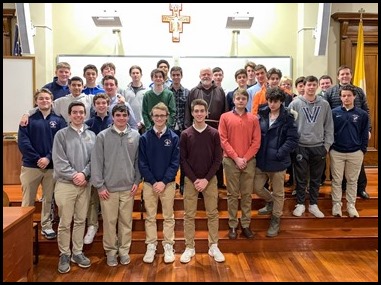
At the conclusion of the evening, I also gave them a talk and took some of their questions.It was a wonderful evening, and I was very pleased to see so many fine young men considering a vocation to the priesthood.
Until next week,
Cardinal Seán

